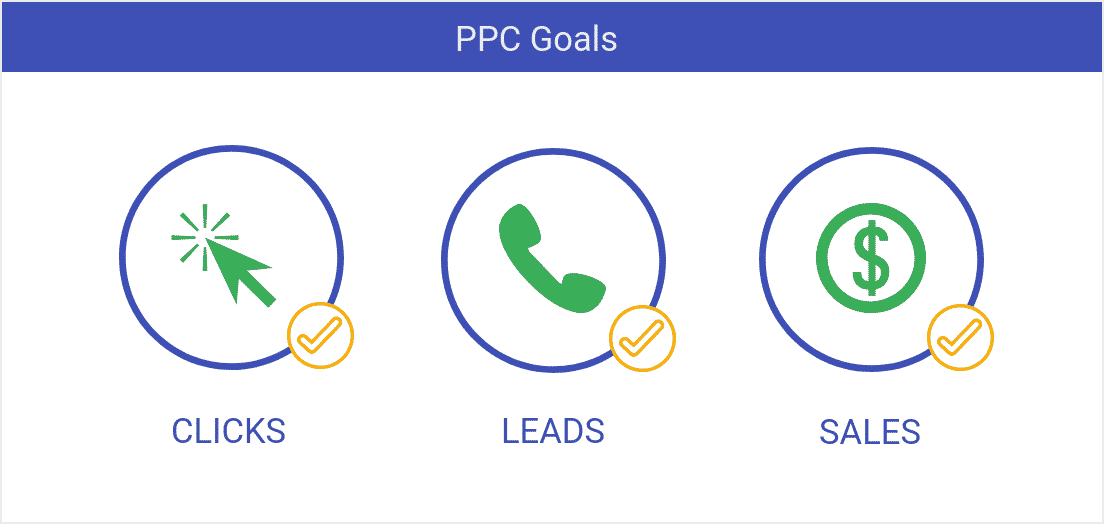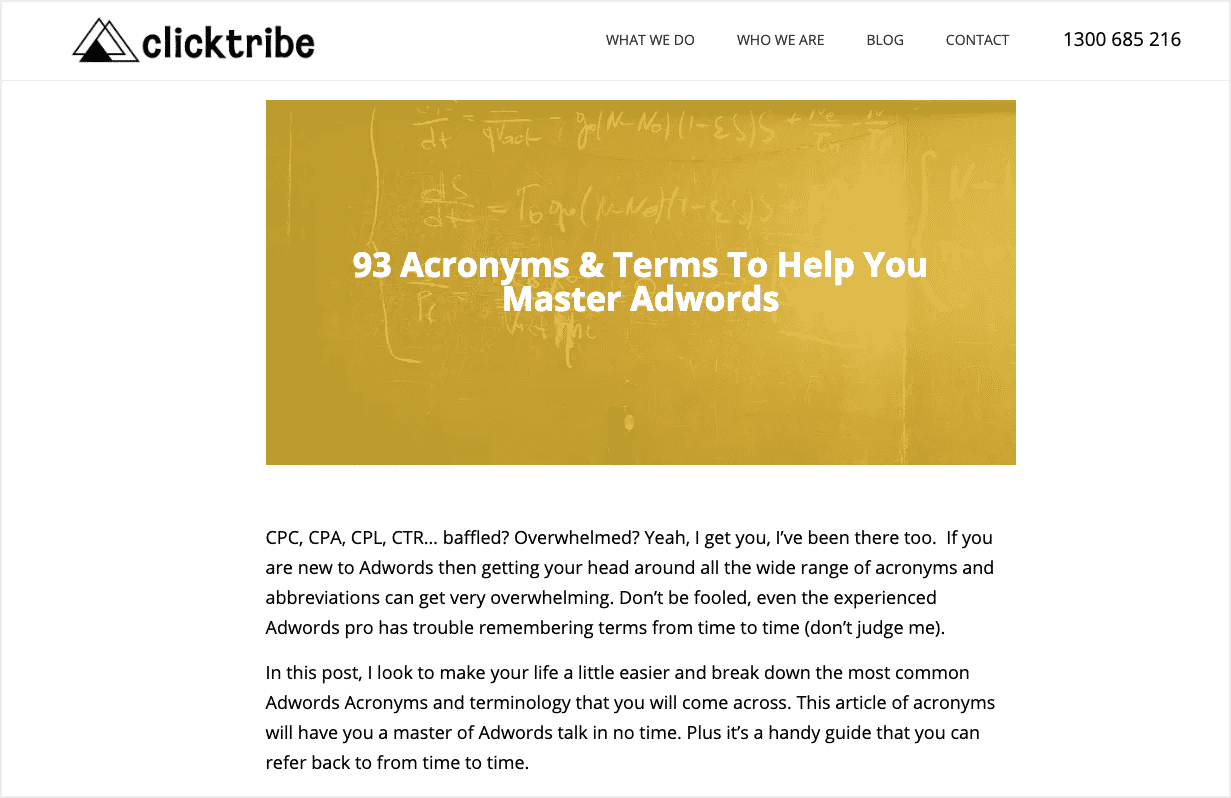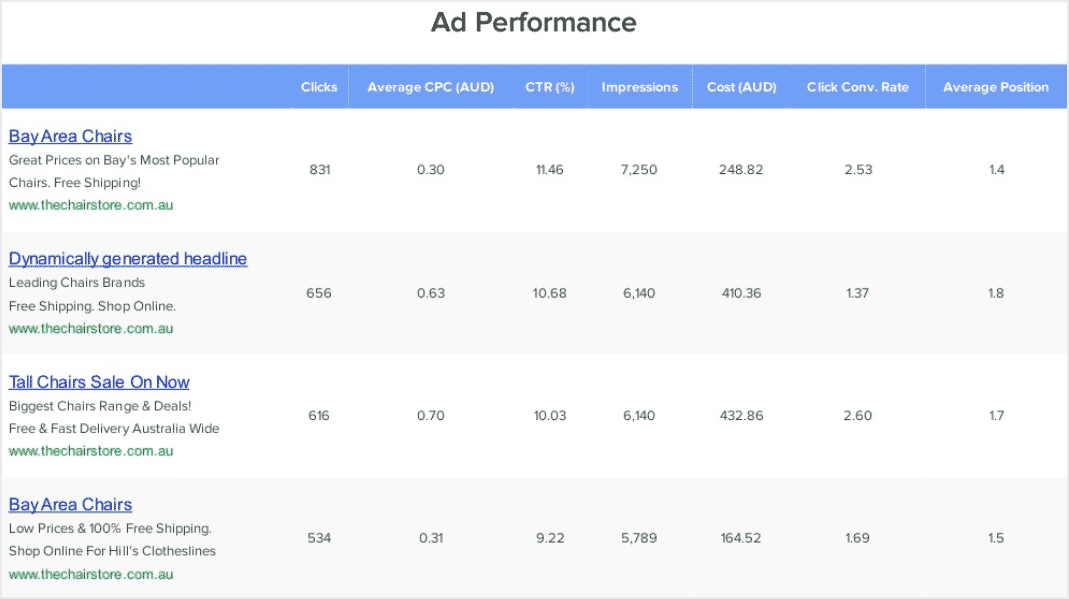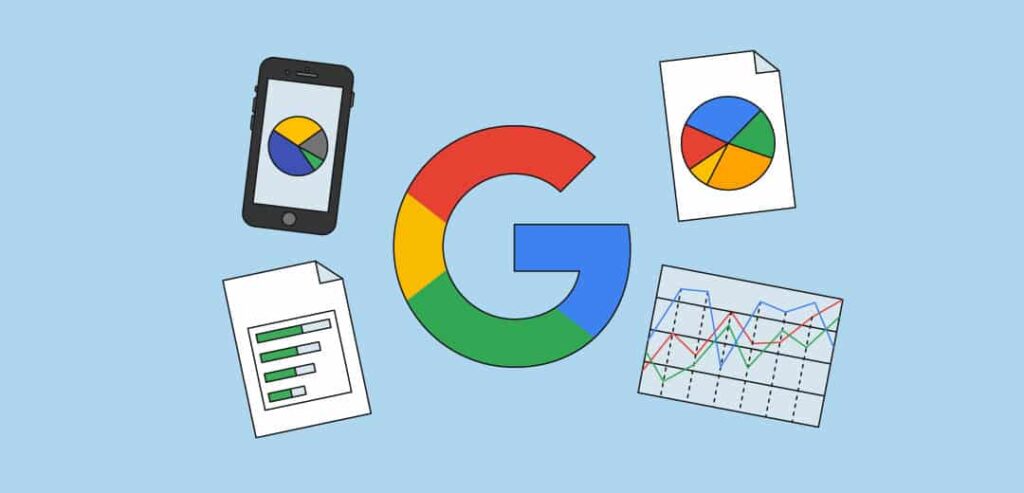Effective PPC reporting lays the foundation for consistent client retention and agency growth…
Unfortunately, if done properly, PPC reports can be extremely time-consuming to complete. Which means for PPC managers who are already at near full-capacity managing campaigns and client relationships, reporting often takes a back seat.
The goal of a report is to inform your client about the positive impact of the PPC campaigns on their business, reinforce the depth of work being done by you and your team, and excite them for the opportunities available in the future.
Just a simple excel export is not going to achieve this impact, in fact, more often than not it can work in direct opposition to this goal.
Numbers and metrics in isolation are simply noise. Whereas, numbers and metrics with the context of how they align with your client’s business goals are meaningful for furthering your relationship.
So, then, how do you design and deliver a PPC report for your clients that will have a positive and lasting impact? And how do you systemize the reporting process so that it’s achievable for time-poor account managers?
First, you need to start with the client’s goals.
Defining the client’s goals
Before you can create a PPC report for your client that is contextually relevant and meaningful towards their goals, you need to actually know what those goals are.
At the very beginning of a client-agency relationship – prior to a deal being brokered – the goal of the campaign should be discussed. Every PPC client is going to be slightly different in their objectives and expectations. So you need to identify and clearly define what success looks like for each client – these are their goals.
By defining a goal for the campaign and a set of expectations with the client, you are reducing the likelihood of an unhappy relationship and preparing yourself to accurately report about the things they care about.
We’d go as far as to say that the single most important leading indicator for long-term client retention and accurate reporting is to create a shared definition of what success looks like.
Now, while all clients have nuanced goals and expectations, you can typically group these into three categories:

- Brand Exposure – determined by Clicks, Click-Through-Rate, and Cost-Per-Click.
- Leads, Meetings or Calls – determined by Lead Conversions and Conversion Rate.
- Sales and Growth – determined by Revenue, Lead-to-Sale Conversion Rate, and ROI calculation.
At a bare minimum, you should identify which of these three categories are MOST important to your client before diving head first into a PPC report. Then, by knowing each client’s goals, you can structure the report and its content based on the data points that are most critical to this outcome. This way you can show the client, month on month, how you are progressing towards their goals for the campaign.
Only once you are clear on the goals then you can determine the most appropriate way for structuring your PPC report. The makeup of an effective PPC report contains many of the same elements, altered depending on the client’s goals of course. Here is a breakdown of each of them.
Key elements of a PPC report
The best PPC reports go from General to Specific…
They start at 10,000 feet with a high-level overview of the campaign’s performance against the articulated goals and make their way down into the trenches with granular data and metrics which provide an in-depth explanation of the results.
Here are the key elements of a PPC report in the order they are typically used:
Executive Summary and Account Performance Overview
It’s fair to assume that the person reading your PPC report is unlikely to be a Google Ads specialist – after all, they’ve hired you as the expert. Depending on the size of their organization, your direct client contact will probably pass the report onto other interested parties as well – these people won’t have the regular contact and context of speaking with you.
The Executive Summary of your report should take into account these two important factors. Make sure the language you use is easy to understand and avoid too much PPC jargon. Also, don’t forget about context. Always reinforce the context of the campaign, the problem you are solving for the client, and the goals they have articulated.
Here are some tips for writing an Executive Summary:
- Don’t make it a wall of text, increase the readability with visual cues such as dot points, graphs, key metrics, and colors that draw a reader to important information.
- Include the goal of the campaign at the very beginning and visually display how far you have progressed towards (or exceeded) that goal.
- Follow up the goal with a high-level dashboard of the most important metrics as they relate to this goal. Visually compare the performance of these metrics to the previous period of reporting.
- Provide a short-form summary of the key wins, losses, opportunities, and risks from the latest period.
- Keep it short – one page is best practice.
The Executive Summary of a PPC report should summarize the most important information and give the client a quick overview of how the campaign is performing. They should be able to read this page and get the “need to know” information without going into detail.
One option for putting together a quick and beautiful looking Account Performance Overview is to use a dashboard tool like Grey Metrics which automatically draws from real-time data based on a custom design of your choice. It’`1s a great choice for a white labeled google ads reporting dashboard.
Table of Contents + Short-Form Glossary
You will find that some “hands off” clients will stop after reading the Executive Summary and simply trust you enough to continue on doing what you do best. For some more detail-oriented clients they will want to know more.
The Table of Contents and Short-Form Glossary plays a key role in helping the detail-oriented clients find the information they need as quickly as possible.
Remember, your client is not a PPC expert, so they may not be familiar with all of the acronyms, PPC terms, and marketing jargon that you use day-to-day in an agency. The Short-Form Glossary should provide definitions of the terms you use throughout the report as a refresher, and the Table of Contents will help the client jump to the section they are most interested in.
If you’re looking for an amazing resource for generating your Short-Form Glossary, check out this article from CRO agency ClickTribe:

Each Metric in More Depth
Perhaps more so than any other form of marketing, PPC is driven by metrics. There is a clear “money in, money out” equation that clients expect to be informed about – of course, there is some grey area.
Not all PPC metrics are made equal. In fact, several popular pieces of reporting data are misleading to the client and provide a vain and distorted perception of reality.
The only PPC metrics that your clients care about are the ones that directly influence their goals. It’s your job to educate them about which metrics have the greatest influence on their objectives and then regularly report back to them on the performance of these data points.
In summary, ignore the vanity metrics and report on the things that matter.
Here are three metrics that every PPC report should include:
- Cost-Per-Click (CPC) – At the end of the day, clicks are insignificant if they don’t turn into sales. In saying that, CPC is a vital piece of data to track and report on, and educating your clients about what it is and why it matters will contribute to the success of your relationship.
- Cost-Per-Acquisition (CPA) – This metric is telling your clients exactly how many leads/inquiries/phone calls they have received and how much each one has cost them. It’s safe to say this will be a measurement your client is interested in.
- Return On Investment (ROI) – The ROI metric takes a more holistic view of the campaign from a business perspective. It takes into consideration other expenses as they relate to closing new business, and is likely the most important data point your client cares about. ROI is a tricky one to communicate with your client because you shouldn’t be held directly accountable to ‘sales’ per se, but it is definitely something they will want to see.
Some other metrics you may like to include in your reports are the Quality Scores for ads, sales funnel Conversion Rates and the Return on Ad Spend (ROAS).
For each metric you choose to include, show the client both campaign-wide averages as well as keyword and ad-specific data points so that they get a holistic view of what the numbers mean. You may also want to show a comparison with the previous period of PPC activity and any industry benchmarks that provide further context.
As you dive deeper into these metrics, focus on the elements of the campaign that inevitably influence its performance; the keywords, ads, landing pages, tests, and internal processes.
Keyword Analysis

Keywords are an integral component of a successful PPC campaign – some would say they are the be-all-and-end-all, others downplay their importance. Whichever camp you sit in, there can’t be a search campaign without keywords to target.
The Keyword Analysis part of your report is when things start to get more granular. You are taking the high-level metrics and breaking them down into individual components that can serve as talking points of their own. Each keyword, its CPC, CPA, and ROI can be analyzed at an individual level to show your client exactly which words are converting prospects into clients, or where further opportunities lie.
Ad Analysis

Much like the Keyword Analysis, your PPC report should include a breakdown of the performance of each individual ad according to the important metrics you have identified.
Which ads are running for which keywords? How are they grouped into campaigns? What are the metrics telling you about their performance?
Landing Page Analysis
A common hurdle for PPC agencies is the control (or lack thereof) of a client’s website and landing pages. You could have your keywords and ad collateral on point, but if the landing pages are misaligned or under-optimized, then the campaign will underperform.
We recommend using a third-party landing page builder for all of your PPC campaigns so that you can test and optimize these pages based on the campaign performance. Preferably choose a builder that integrates with the client’s website and prevents you from messing with their core code.
In your report, provide an analysis of all of the landing pages used for the campaign. Along with the metrics discussed above, provide commentary on the key components of a PPC landing page that may be missing.
You could even visually show your client how the ads and landing pages work in alignment with screenshots like this ad from Airbnb:


Split Tests
To ensure a PPC campaign is continually improving it’s important to run split tests. No doubt you are running hundreds of mini-tests for your clients in order to optimize the performance of their campaign and reduce their CPA. So, you should report back to the client about these tests.
Discuss the details of each split test you have done, which elements were tested, how long the test ran for, what was learned, etc. This section could be as robust or minimalist as you like, it depends on the client. For example, you may simply be running micro tests on ad copy, keywords, and offers as a way to optimize the campaign. Or, alternatively, you could be running bigger scale tests in collaboration with the client such as geo-targeted campaigns or customer avatar splits, to help identify genuine business opportunities. Whichever it is, make sure you report on all of the activity you are doing to improve the performance of their campaign and progress towards the articulated goal.
Internal Process Analysis
The final piece of the puzzle when it comes to genuine ROI for your PPC clients are their internal processes. Unfortunately, this is something you don’t have much influence over but it could determine whether or not you retain a client. For example, a PPC campaign may be getting hundreds of phone inquiries that are going unanswered due to a poor internal process.
Look into getting CRM access, encourage your client to set up call tracking, or run some qualitative tests of your own to see how tight their internal sales process is at closing leads. Include your findings in the report.
What to Start and What to Stop
This section of your PPC report is somewhat reflective in nature. It is the insights, learnings, and recommendations that you, as the PPC expert, are making based on the metrics outlined above. You provided a short summary of the wins, losses, opportunities, and risks in the Executive Summary, now, this is your chance to expand on these messages.
If something isn’t working, let the client know. Don’t be scared to show negative parts of a campaign’s performance. In fact, you should highlight where things have gone wrong as long as you present actionable recommendations to go alongside them. Transparency breeds trust and improves client retention.
This section could be a simple table with some dot points; “What to Start” and “What to Stop”. Include reasons and rationale for each of your observations and recommendations, but don’t go into too much depth.
Refine, Automate, and Scale
As we mentioned in the introduction to this article, PPC reporting can be extremely time-consuming if you produce reports that are truly meaningful and in-depth for your clients.
Of course, if you are juggling a growing list of clients in your portfolio then the process of generating monthly PPC reports can detract from your ability to deliver client outcomes.
In order to scale PPC reporting and maintain quality standards, you need to become intricately familiar with the workflows, processes, and inputs that go into each report. To do so, consider segmenting the process up into individual tasks that can be systemized and delegated. By segmenting up the creation and delivery of your PPC reporting process into manageable tasks, it makes it easier for you to repeat with consistency, teach new team members, and regularly exceed your clients’ expectations.
Aim to document the whole process on a detailed level – include process steps, video walkthroughs, templates, shortcut links, and anything else you can think of that will accelerate the time it takes to create a report. Your account managers can then jump into a shared library of reporting collateral and get what they need, instead of recreating the wheel every time.
By developing in-depth training documentation for your reporting process it enables you to automate with technology, outsource with confidence, and scale with ease.

